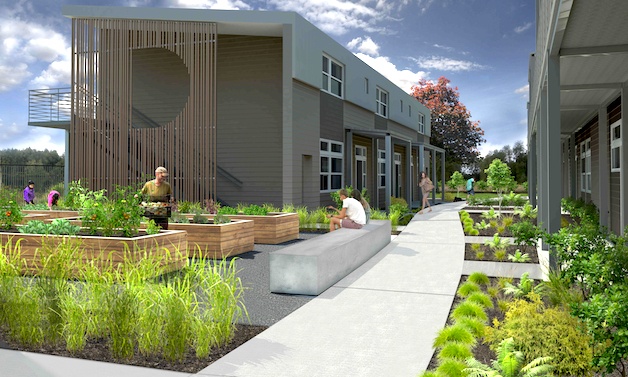ARLINGTON — Housing Hope is aiming to address homelessness in Arlington, Marysville, Tulalip, Stanwood and Camano Island, with a site in Lakewood they expect to serve 182 low-income families over the next 10 years.
Alexander Lark, philanthropy manager for the nonprofit in Everett, presented the plans for the Twin Lakes Landing 50-unit transitional housing center to the Arlington City Council March 28.
Lark noted that rent alone for a two-bedroom apartment in Snohomish County requires a wage of $27.21 an hour.
“We have a functional vacancy rate of zero in this county for apartments or other housing,” Lark said.
After Housing Hope started in 1987, it expanded its operations into Arlington in 1993, and has overseen the building of “sweat equity” homes, including the neighborhoods of Maple Leaf Meadows in 2003 and The Bluffs in 2005, by those who wouldn’t have been able to afford new houses of their own otherwise.
Lark explained that Twin Lakes Landing would serve families at various stages from homelessness to independence, with on-site programs ranging from teen parenting classes to adult life skills courses.
“We want folks who are at different stages of that journey to engage with and learn from each other,” Lark said. “They can share their struggles within a positive support system.”
Twin Lakes Landing’s services are even set to include child development consultation and job training.
“Housing Hope offers one of the oldest programs for children of homelessness in the county,” Lark said. “We’ve partnered with groups like Cocoon House to teach job skills and help those who might have rocky employment histories.”
Lark reported that half of last year’s enrollees found jobs within a month, and that their average wage was $13.20 an hour.
“We even address health and wellness, with lessons on cooking and stress management,” Lark said.
Lark expects ground to be broken on Twin Lakes Landing by late May or early June. The center is slated to include community meeting spaces and provide access to public transit.
“It’s a bit of an IKEA building,” Lark said. “By assembling the buildings off-site, shipping them and putting them together here, we expect to cut our construction costs by about thirty percent.”
To determine eligibility for Twin Lakes Landing, as well as the nonprofit’s other programs, Housing Hope works with Snohomish County’s 211 coordinated entry system.
“They maintain the waiting list for our families and for most, if not all, of the health and human service nonprofits in the county,” Lark said.
Lark identified a number of sources for the center’s funding, from grant applications and private donations to contributions from community groups, ranging from chapters of Rotary to area chambers of commerce. By leveraging them against each other, Lark predicted that House Hope’s $50,000 in seed money would expand into $12 million.
Given the drastic increase in homelessness recorded during this year’s Point-In-Time Count, Lark deemed Twin Lakes Landing an essential response to an increasingly pressing problem.
“Job losses and family breakups are the leading causes of homelessness,” Lark said. “For so many people, all it takes is one last straw to break the camel’s back.”







